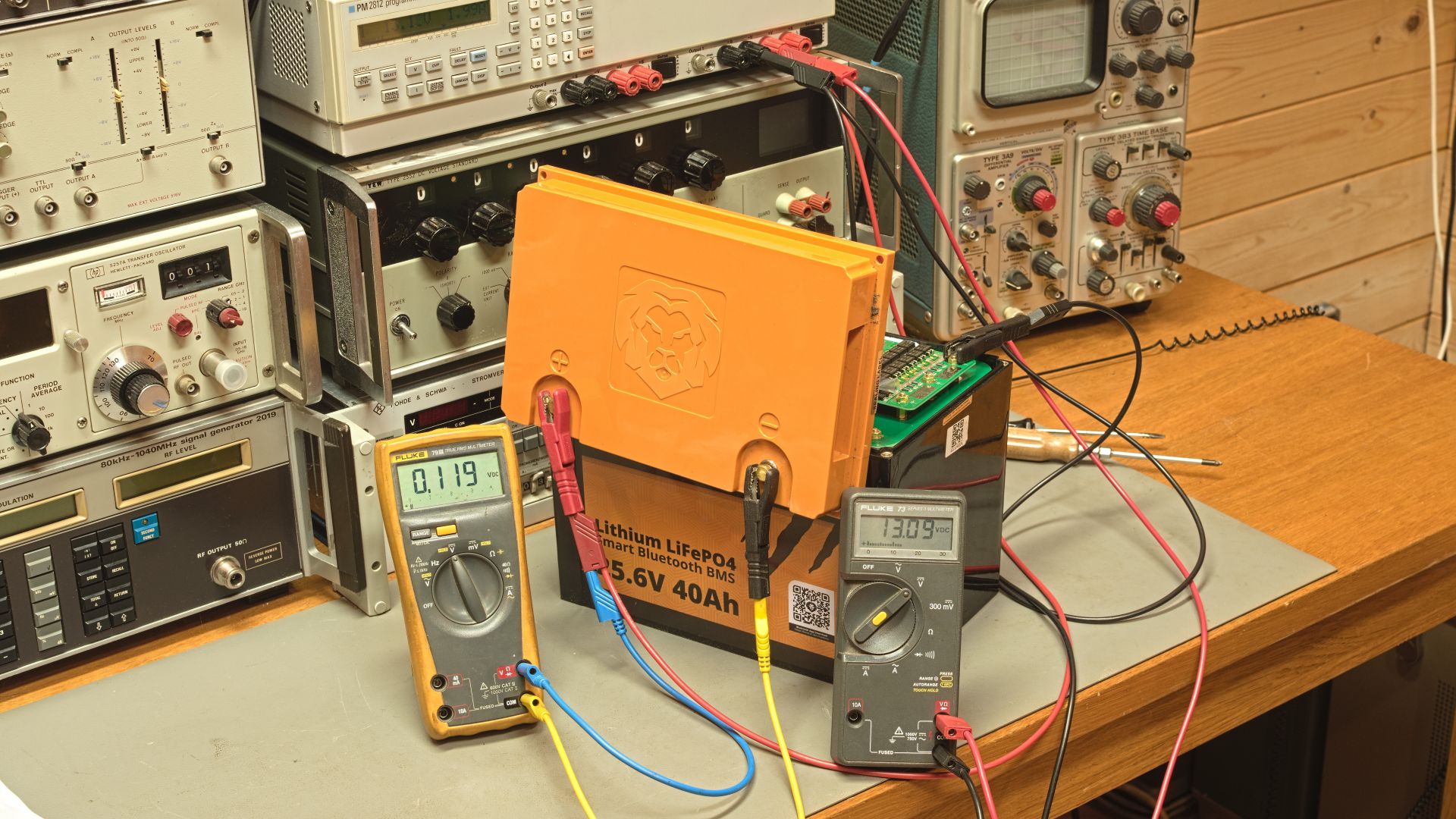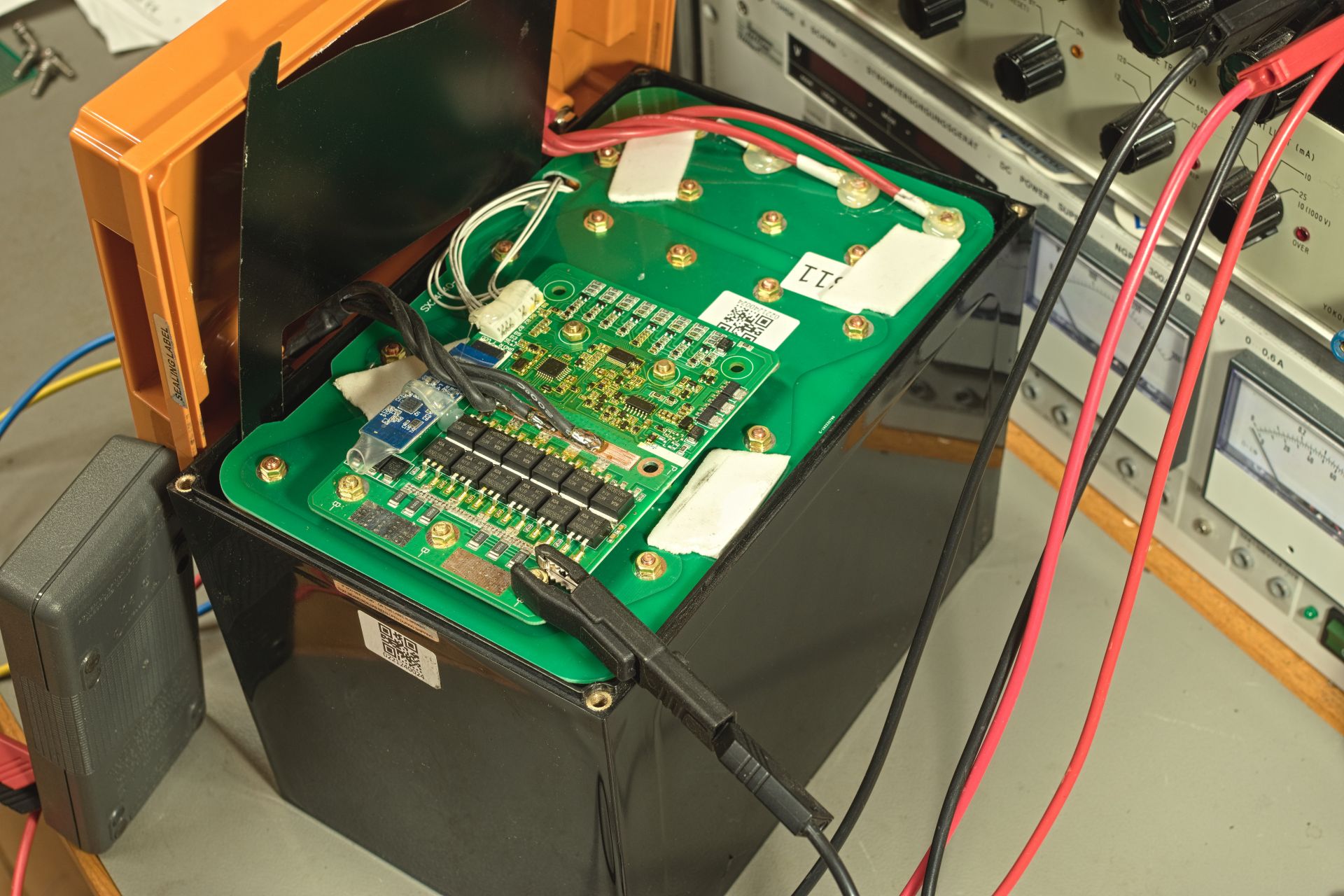Rescuing a LiFePO4 battery
For a project, I have a Liontron 25.6V 40Ah lithium battery. The project was delayed and when I finally could start, the battery was completely discharged. The Battery Management System (BMS) refused to start up again. So what to do?
2025-02-20
The problem
Lithium batteries can hold a charge for a long time. But sometimes the battery uses a BMS with a high self consumption. The Liontron battery I have has a build in Bluetooth device which can drain the battery in a mater of months. Not very good design practice if you ask me.
When the cell voltage goes below a certain voltage, the BMS shuts off completely and cannot be turned on again. This turns the battery into a very expensive brick.
Solution
Fortunately, the battery can be opened giving access to the cells, completely bypassing the BMS. This way I can connect a charger directly to the cells. With any hope, the cells accept the charge and the BMS starts up again.
How to connect it all
After opening the battery I can see that the positive terminal is directly connected to the cells. The negative terminal is connected to the BMS. An array of FETs can switch on and off the negative terminal and therefore switch on and off the battery. The negative side of the cells is accessible on the BMS via three terminals.
To charge the cells I connect the positive output of a lab power supply to the positive terminal of the battery and the negative output of the lab power supply to the negative cell connection on the BMS. This is not the negative terminal of the battery as I want to bypass the BMS.
I connect a multimeter between the positve terminal of the battery and the negative cell connection on the BMS. Finally I connect a multimeter between the positive and negative terminals of the battery. When the BMS starts up again, this second multimeter will read about 24 Volt.
The lab power supply is set to 28.8 Volt (which, according to the datasheet, is the end-of-charge voltage of the Liontron battery) and the current limiter to 6 Ampere. This way the power supply will act as a lithium battery charger, pushing a constant current into the battery until the end-of-charge voltage is reached.
I keep an eye on the setup and when the BMS starts up again, I disconnect the negative lead from the BMS and connect it to the negative terminal of the battery. Now the BMS is back in control. I make sure the battery is fully charged before disconnecting the lab power supply. This way the BMS can balance the individual cells ensuring the battery is in good condition again.



Conclusion
If a lithium battery appears to be dead, it could be that the individual cells are discharged below the threshold of the BMS. It is not possible to charge the battery the normal way. But most of the time, the battery can be repaired by opening the battery and charging the cells directly, bypassing the BMS. When the voltage of the cells rise above the BMS threshold, the BMS starts up again and the battery is repaired.